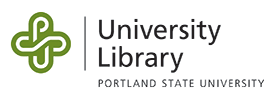Sponsor
This paper acts as a background to the impact maximization work package (8), in the Israeli Science Foundation Planning and Budgeting Committee, Waste to Energy Research Hub (Grant No. 0605408961).
Published In
Computers
Document Type
Article
Publication Date
9-26-2025
Subjects
Carbon credit exchange
Abstract
The 2015 Paris Agreement paved the way for the carbon trade economy, which has since evolved but has not attained a substantial magnitude. While carbon credit exchange is a critical mechanism for achieving global climate targets, it faces persistent challenges related to transparency, double-counting, and verification. This paper examines how Distributed Ledger Technology (DLT) can address these limitations by providing immutable transaction records, automated verification through digitally encoded smart contracts, and increased market efficiency. To assess DLT’s strategic potential for leveraging the carbon markets and, more explicitly, whether its implementation can reduce transaction costs and enhance market integrity, three alternative approaches that apply DLT for carbon trading were taken as case studies. By comparing key elements in these DLT-based carbon credit platforms, it is elucidated that these proposed frameworks may be developed for a scalable global platform. The integration of existing compliance markets in the EU (case study 1), Australia (case study 2), and China (case study 3) can act as a standard for a global carbon trade establishment. The findings from these case studies suggest that while DLT offers a promising path toward more sustainable carbon markets, regulatory harmonization, standardization, and data transfer across platforms remain significant challenges.
Rights
© 2025 by the authors. Licensee MDPI, Basel, Switzerland. This article is an open access article distributed under the terms and conditions of the Creative Commons Attribution (CC BY) license (https://creativecommons.org/licenses/by/4.0/).
Locate the Document
DOI
10.3390/computers14090403
Persistent Identifier
https://archives.pdx.edu/ds/psu/44146
Publisher
MDPI AG
Citation Details
Heister, S., Hui, F. K. P., Wilson, D. I., & Anker, Y. (2025). Beyond Opacity: Distributed Ledger Technology as a Catalyst for Carbon Credit Market Integrity. Computers, 14(9), 403.

